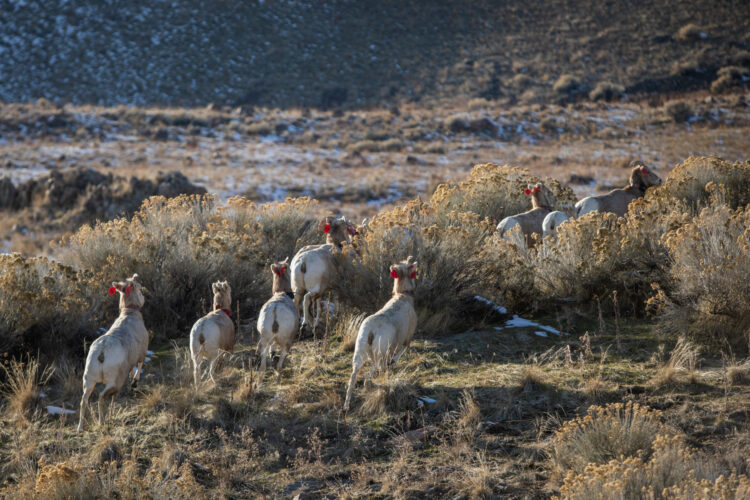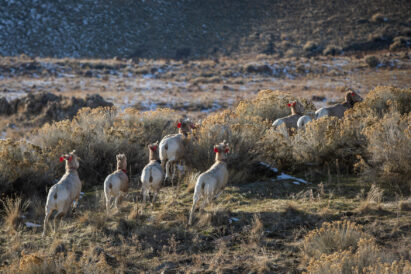Division of Wildlife Resources seeks public feedback amid proposed changes to bighorn sheep plan

BEN DORGER, Standard-Examiner file photo
The Utah Division of Wildlife Resources released 25 bighorn sheep Wednesday, Jan. 29, 2020, on Antelope Island. The sheep were transported from Montana to establish a new herd on the Island after a 2018 respiratory virus wiped out the preexisting herd of about 150 sheep.OGDEN — The Utah Division of Wildlife Resources, or DWR, is seeking public feedback on proposed updates to its statewide management plans for bighorn sheep and mountain goats as the agency engages in a mid-plan review.
The state’s five regional advisory councils, or RACs, will accept feedback during public meetings to be held in August and September. That includes the Northern Utah RAC meeting, scheduled for Aug. 27 at 6 p.m. in the Weber County Commission chambers in Ogden.
“We’re an advisory council to the (Utah Wildlife Board), so we’ll come and present things to all five regions … and the input from those RAC meetings, we then present to the Wildlife Board, and the Wildlife Board has the ultimate decision in how we manage wildlife in this state,” DWR Once-in-a-Lifetime Species Coordinator Rusty Robinson explained to the Standard-Examiner.
Among the proposed changes to the 10-year plans are the addition of information regarding the process preceding bighorn sheep transplants, adding information about the involvement of public hunters in disease prevention and response incidents, updating state code references following recent legislative changes, adding the Boulder hunting unit as a potential location for future desert bighorn sheep reintroduction and more.
DWR is also considering the addition of the Great Salt Lake’s Fremont Island to the list of potential reintroduction sites for Rocky Mountain bighorn sheep. It’s a list that already includes the Wellsville Mountains, Bovine Mountain, Goose Creek, the Raft River Mountains, Stansbury Island and other locales throughout Northern Utah and statewide.
According to Robinson, there are roughly 1,700 Rocky Mountain bighorn sheep and 3,000 desert bighorn sheep in the state. Although bighorn sheep are susceptible to fatal pathogens, which can result in disease-related die-offs, he described Utah as having a “generally growing” bighorn sheep population.
In an effort to preserve that trend, Robinson said the DWR is working to establish nursery populations for each subspecies.
“We have Antelope Island, which is a nursery population for Rocky Mountain bighorn sheep, and we have a facility on Promontory Point that serves a nursery population for our desert bighorn sheep,” Robinson said. “So, the idea is we keep these populations isolated from pathogens.”
Regarding Fremont Island as a possible reintroduction site, Robinson noted that the location has “good bighorn sheep habitat.” The island is currently owned by the state and managed by the Utah Division of Forestry, Fire & State Lands.
“This is kind of the first step moving in the direction of a potential transplant there,” Robinson said. “But, obviously, we wouldn’t do anything until all parties are happy with the plan and the outcome, and then we can move that direction.”
For her part, Friends of Great Salt Lake Director Lynn de Freitas thinks the addition of Fremont Island to the list makes sense. At the least, it’s more appropriate than detrimental activities occurring when the island was under previous ownership.
“Bighorn sheep were a part of using the grazing opportunities on Fremont Island and Antelope Island, so they’re a native species,” she said. “Being on Fremont Island would certainly be in keeping with regard for a native species that is prized, if you will, and I think it would actually be a logical fit.”
For more information on the upcoming RAC meetings, including scheduling and other proposed updates, go to https://wildlife.utah.gov/rac-feedback.html/.



